Book Review: The Shirt Hunter: One Man’s Ceaseless Pursuit of Classic Football Kits by Perris Hatton
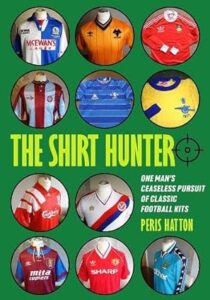 When I was first standing on the terraces of my beloved Fulham as a child, replica kits just weren’t a thing, but all this changed when Admiral came on the scene in the 1970s. With their bold designs and colours Admiral were the pioneers that led to the creation of the multi-million pound business in football kits that exists today.
When I was first standing on the terraces of my beloved Fulham as a child, replica kits just weren’t a thing, but all this changed when Admiral came on the scene in the 1970s. With their bold designs and colours Admiral were the pioneers that led to the creation of the multi-million pound business in football kits that exists today.
The story of the Leicester based company is superbly told in another of Conkers Editions, fine stable of books, Get Shirty: The Rise & Fall of Admiral Sportswear and provides context for Perris Hatton’s The Shirt Hunter: One Man’s Ceaseless Pursuit of Classic Football Kits. Admiral not only provided the catalyst for the replica shirt market of today, but also could be said to have sparked the start of the collectables scene.
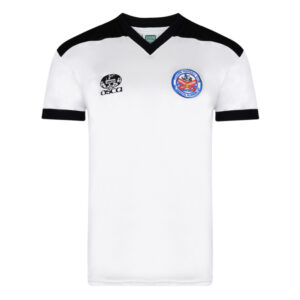
One thing reading this book did was to look back at my own teams recent shirt history. Fulham, of recent years have been a Premier League club and is reflected in the fact that since 2013/14 have been with Adidas. Those of us though that remember the days of life in the lower echelons of the Football League will recall, that we had kits manufactured by companies such as Osca, Scoreline, DMF and Vandanel – companies mostly long since gone. Interestingly though, that whilst finding original replicas of those shirts will cost a small fortune, a retro market in remakes has taken place, so for Fulham for instance there are some great versions which pay homage to the Osca kits worn between 1981 and 1984.
Hatton is a major football shirt collector and dealer and uses all his knowledge and experience in the field to produce an interesting and entertaining book that will be a great read for anyone interested in football shirt memorabilia. Not only does he provides some hints and tips on buying, collecting and selling, but also various amusing anecdotes as he trawls the country for hidden treasures.
The largest part of the book, however, is given over to an A-Z of football kit manufacturers past and present, where you’ve find details and facts about the modern day big-guns of Adidas, Macron, Nike, Puma and Umbro, side-by-side with lesser known names lost since lost to polyester heaven – all as ever in true Conker Editions fashion, colourfully and lovingly illustrated.
(Publisher: Conker Editions Ltd. October 2023 Paperback: 184 pages)
Buy the book here: The Shirt Hunter
 Growing up in the 1970s the I-Spy books were something I collected. They covered all sorts of topics from the sights of London, various forms of transport, nature and science, to sports including football. The purpose was to spot the various objects listed within the book so ticking them off. In today’s high-tech, digital age, this concept wouldn’t excite many youngsters, but back then it passed as something both entertaining and educational.
Growing up in the 1970s the I-Spy books were something I collected. They covered all sorts of topics from the sights of London, various forms of transport, nature and science, to sports including football. The purpose was to spot the various objects listed within the book so ticking them off. In today’s high-tech, digital age, this concept wouldn’t excite many youngsters, but back then it passed as something both entertaining and educational. Watching the recent 2022 World Cup there were a couple of things in terms of the fans attending that stood out. Firstly, irrespective of the country, and whether a child or an adult the vast majority were wearing replica shirts creating swathes of colour in the stands. Secondly, despite The FA having signed with Nike in 2012 to produce the England kits, many fans favoured the wearing of retro shirts from before that period. Prominent amongst them were the Three Lions home and away shirts released in 1980 and 1982 respectively, synonymous with the European Championship Finals in Italy and the World Cup in Spain. The design with the distinctive coloured bands across the shoulders was derided by many leading names in the game at the time, but yet over 40 years later are much loved by fans. The original maker of these now classic tops? A Leicester firm called Admiral.
Watching the recent 2022 World Cup there were a couple of things in terms of the fans attending that stood out. Firstly, irrespective of the country, and whether a child or an adult the vast majority were wearing replica shirts creating swathes of colour in the stands. Secondly, despite The FA having signed with Nike in 2012 to produce the England kits, many fans favoured the wearing of retro shirts from before that period. Prominent amongst them were the Three Lions home and away shirts released in 1980 and 1982 respectively, synonymous with the European Championship Finals in Italy and the World Cup in Spain. The design with the distinctive coloured bands across the shoulders was derided by many leading names in the game at the time, but yet over 40 years later are much loved by fans. The original maker of these now classic tops? A Leicester firm called Admiral.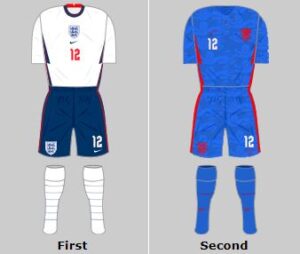
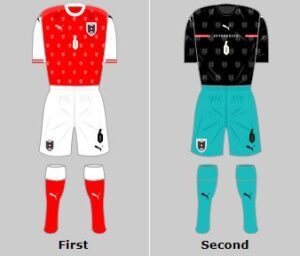
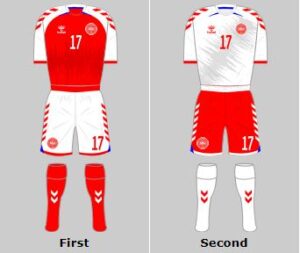

 Of course we all know that it is the World Cup Final between Argentina and Germany tonight. However, at Adidas Headquarters in Herzogenaurach, Bavaria, there will be celebrations whatever the outcome as the winning team will be wearing kit made by the German company. Nike had to make-do with their two big-hitters (Brazil and Netherlands) squabbling over the play-off fixture yesterday.
Of course we all know that it is the World Cup Final between Argentina and Germany tonight. However, at Adidas Headquarters in Herzogenaurach, Bavaria, there will be celebrations whatever the outcome as the winning team will be wearing kit made by the German company. Nike had to make-do with their two big-hitters (Brazil and Netherlands) squabbling over the play-off fixture yesterday.